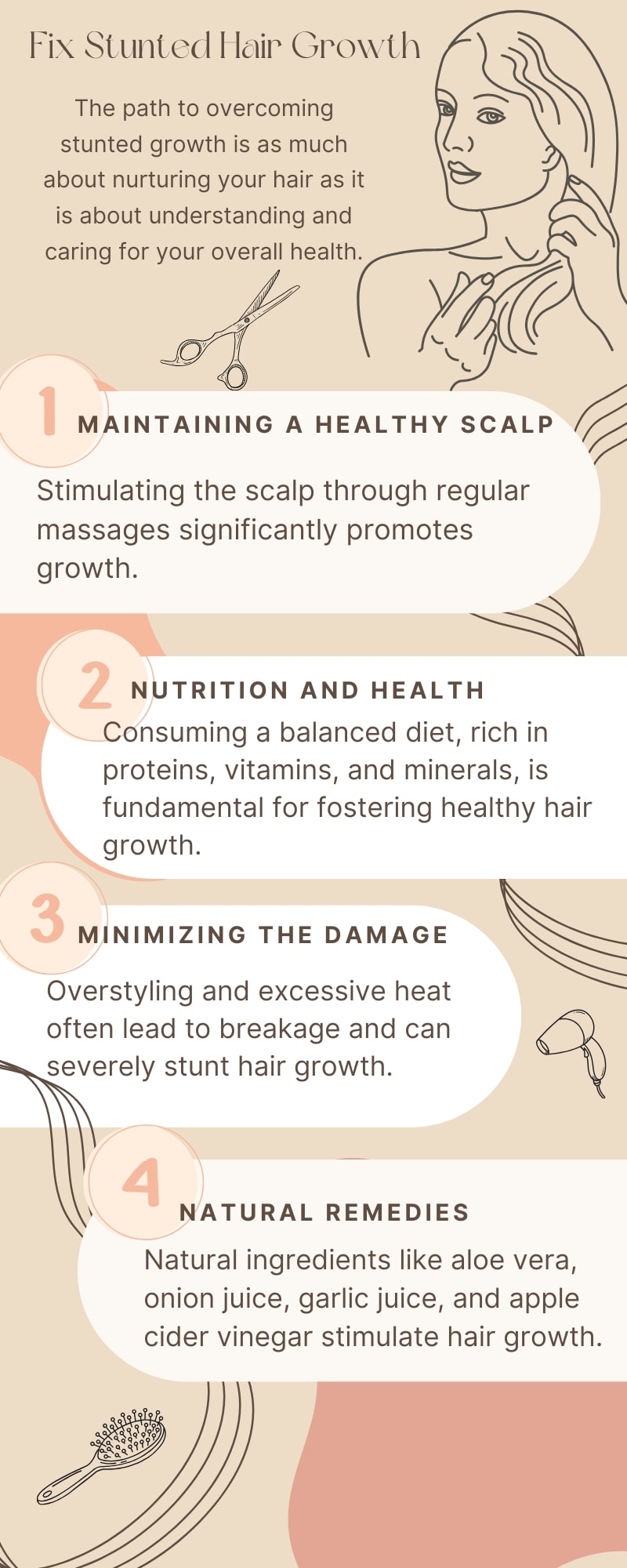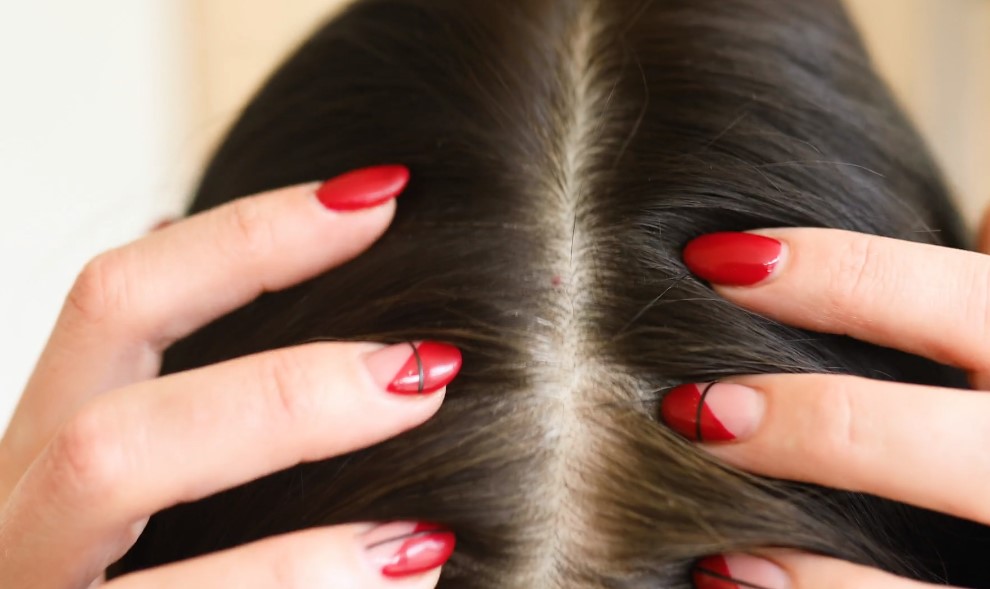We all understand how disheartening it can feel when your hair just doesn’t seem to grow. Over time, I’ve realized that tackling this issue requires a blend of understanding, patience, and the right techniques. Of course, the challenges are numerous, and not always easy to overcome.
That is why I aim to share the insights and strategies that have helped me overcome this hurdle. Finding the best products on the market depends on a variety of factors, depending on the type of hair, including stunted hair growth. Let me share my personal experience with fixing stunted hair growth with you, and what you should focus on.
Maintaining a Healthy Scalp
I’ve learned that the foundation of hair growth lies in a healthy scalp. Regular shampooing is a crucial step in maintaining scalp health. It helps remove dirt, sebum, and product buildup, which, if left unchecked, can clog follicles and hinder growth.
I discovered the importance of using gentle, sulfate-free shampoos. These types of shampoos effectively cleanse without stripping away the natural oils that are essential for a healthy scalp. This balance is vital to avoid scalp dryness or irritation, which can contribute to stunted growth. But cleansing alone isn’t enough.
I found that stimulating the scalp through regular massages significantly promotes growth. These massages enhance blood circulation to the scalp, bringing more nutrients and oxygen to the follicles, which is essential for healthy hair development. I often use natural oils like coconut or jojoba during these massages.
These oils not only provide the necessary nourishment to the scalp but also make the massage process more soothing and enjoyable. The act of massaging also helps in stress reduction, which is another factor that can impact hair health.
My scalp feels healthier, and I’ve observed that my hair seems to be growing stronger and more vigorously. It’s a reminder that taking care of your scalp is as important as taking care of the hair itself. You can use Wild Growth Oil to achieve solid results.
Nutrition and Health
Consuming a balanced diet, rich in proteins, vitamins, and minerals, is fundamental for fostering healthy hair growth.
| Nutrient | Sources | Benefits for Hair |
|---|---|---|
| Protein | Eggs, Fish, Lean Meats | Strengthens hair strands |
| Omega-3 Fatty Acids | Salmon, Nuts, Seeds | Promotes scalp health |
| Iron | Leafy Greens, Red Meat, Legumes | Supports hair growth |
| Vitamins A & C | Citrus Fruits, Sweet Potatoes, Carrots | Antioxidant properties, scalp health |
| Biotin | Eggs, Nuts, Whole Grains | Prevents hair loss, stimulates growth |
| Zinc | Nuts, Dairy, Whole Grains | Hair repair and growth |
These foods provide a range of benefits – from proteins that strengthen strands to vitamins and minerals that support overall hair health.
I’ve observed a noticeable improvement in my case and growth rate when my diet is rich in these nutrients. Alongside diet, managing stress has been pivotal in maintaining hair health. High-stress levels can adversely affect it, potentially leading to hair loss or stunted growth.
I’ve found practices like yoga, meditation, and regular exercise to be incredibly effective in managing stress. These activities not only help in reducing stress but also improve overall well-being, which in turn positively impacts growth. The correlation between reduced stress levels and improved hair health became evident to me over time.
Minimizing the Damage
Overstyling and excessive heat often lead to breakage and can severely stunt hair growth. To counter this, I adopted a gentler approach to styling. I steered clear of tight styles that put undue stress on my scalp. Instead, I opted for looser, more natural styles that allowed it to rest and recover.
When it came to heat styling, I became much more cautious. I learned the importance of not overusing tools like straighteners and curling irons. On occasions where heat styling was unavoidable, I made sure to apply a heat protectant beforehand. This step helped create a barrier between my hair and the high temperatures.
Additionally, I was mindful to keep the heat settings on the lower side to minimize potential damage. Deep conditioning treatments became an integral part of my care regimen. These treatments are a powerhouse of hydration and nourishment. Argan oil can be of much help in these situations.
They penetrate deep into the shaft, providing the moisture and nutrients needed to strengthen. This regular infusion of moisture was crucial in helping maintain its elasticity and resilience, reducing the likelihood of breakage. Another critical aspect I incorporated was regular trims.
Getting my hair trimmed every 3 to 4 months was essential in keeping split ends at bay. Of course, mixing essential oils is a major force in this process. Split ends, if left unattended, can travel up the shaft and cause further damage. Regular trims ensured that my hair remained healthy and free from split ends, contributing to its overall strength and growth.
Natural Remedies and Treatments
I discovered that oils like coconut, castor, olive, and avocado are not just nourishing but also potent stimulants for hair growth. Adding these oils into my scalp massage routine became a regular practice. The massages themselves improved blood circulation, while the oils provided deep nourishment.
Additionally, I experimented with creating masks using these oils at home, which helped in deeply conditioning my scalp. Besides oils, I went into other natural ingredients like aloe vera, onion juice, garlic juice, and apple cider vinegar. Each of these ingredients brought unique benefits to my hair care regimen.
| Natural Remedy | Benefits for Hair and Scalp |
|---|---|
| Coconut Oil | Deeply moisturizes, strengthens hair follicles |
| Castor Oil | Promotes hair growth, thickens hair |
| Olive Oil | Nourishes scalp, improves hair health |
| Avocado Oil | Rich in vitamins, hydrates and softens hair |
| Aloe Vera | Soothes scalp, hydrates hair |
| Onion Juice | Stimulates blood circulation, enhances growth |
| Garlic Juice | Boosts blood flow, strengthens hair roots |
| Apple Cider Vinegar | Balances scalp pH, adds shine to hair |
FAQs
On average, it takes about 3-5 months to grow 5 cm of hair, considering the normal growth rate of approximately 0.5-1.7 cm per month.
The Bottom Line
Through my experience, I’ve discovered that there’s no one-size-fits-all solution, but rather a series of personalized steps and adjustments that can lead to healthier, longer hair. This guide has encapsulated the essence of my learnings, offering a comprehensive approach to tackling this common hair concern.
Remember, the path to overcoming stunted growth is as much about nurturing your hair as it is about understanding and caring for your overall health. With persistence, the right care, and a bit of time, achieving the luscious, healthy hair you desire is definitely within reach.
Related Posts:
- How to Mix Essential Oils for Hair Growth: 8 Steps
- Unlocking Healing: The Crucial Role of Family…
- How Do You Fix a Leaking Gut: Gut Healing Simplified
- How to Start Your Self Care Journey in 2024 - 10…
- Does Argan Oil Help Hair Growth and How to Use it Properly?
- 5 Best Hair Growth Products in 2024 - Market’s Elite

















